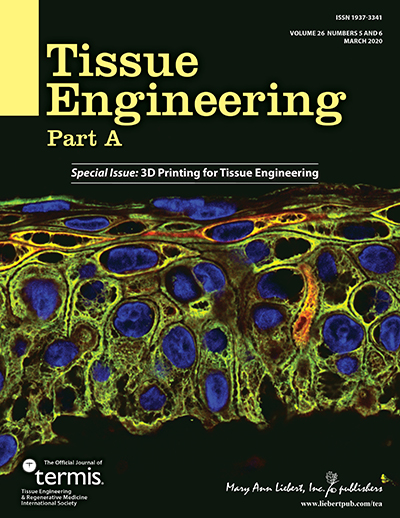
In the market for an admirably clear and concise retraction notice? Look no further!
A researcher in China has lost one — well, maybe two, more on that in a moment — 2015 articles for falsification of data and other misconduct. And one of the journals he tried to dupe is having none of it.
The papers appeared in Tissue Engineering, which is published by Mary Ann Liebert. A related, but yet unretracted, article was in the Journal of Materials Science: Materials in Medicine, a Springer title. The focus of the case is Xing Wei, of the, National Engineering Research Center of Genetic Medicine at Jinan University, in Guangzhou.
Here’s the retraction notice:
The editors of Tissue Engineering were informed by an external peer reviewer about potential fraud with two similarly published articles in 2014 in Tissue Engineering: Part A, and again in 2015 in the Journal of Materials Science: Materials in Medicine. The two published articles are:
Wu Z, Fan L, Xu B, Lin Y, Zhang P, Wei X. Use of decellularized scaffolds combined with hyaluronic acid and basic fibroblast growth factor for skin tissue engineering. Tissue Eng Part A. 2015;21(1–2):390–402. DOI: 10.1089/ten.tea.2013.0260. Epub 2014 Oct 14.
Wu Z, Tang Y, Fang H, Su Z, Xu B, Lin Y, Zhang P, Wei X. Decellularized scaffolds containing hyaluronic acid and EGF for promoting the recover of skin wounds. J Mater Sci Mater Med. 2015;26(1):5322. DOI: 10.1007/s10856-014-5322-1.
Signs of scientific misconduct were found in both articles. In brief, the same images were used in both articles, claiming to show different treatment conditions. Further, the same image was used in different magnifications, again stating that it shows different treatment conditions. Lastly, there appeared to be potential evidence that images were manipulated by cutting, copying, and pasting elements from one image to another.
The editors of Tissue Engineering brought this issue to the attention of the authors, but were not satisfied by their response. As a result, the editorial leadership of Tissue Engineering have determined that a retraction is required in order to protect the integrity of the literature.
In 2015, Dr. Wei published another paper in Tissue Engineering entitled, “Promoting the Recovery of Injured Liver with Poly (3-Hydroxybutyrate-Co-3-Hydroxyvalerate-Co-3-Hydroxyhexanoate) Scaffolds Loaded with Umbilical Cord-Derived Mesenchymal Stem Cells, published in volume 21, number 3–4, which is also being retracted separately based on the potential evidence of image manipulation.
Tissue Engineering, its editors, and its publisher are committed to upholding the strictest standards of the scientific record and the community it serves.
While the notice is quite detailed, the second paper mentioned has not yet been marked retracted.
Neither has the paper in the Journal of Materials Science: Materials in Medicine. We emailed the editor of the journal about its status but have not heard back.
We also emailed Wei for comment but did not receive a response.
Like Retraction Watch? You can make a tax-deductible contribution to support our work, follow us on Twitter, like us on Facebook, add us to your RSS reader, or subscribe to our daily digest. If you find a retraction that’s not in our database, you can let us know here. For comments or feedback, email us at [email protected].